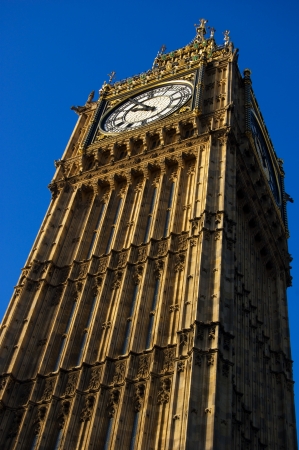The Whisper of Wings: Britain’s Enduring Fascination with Flight
Across the misty moors and rolling hills of Britain, there has always lingered a whisper—a subtle calling in the wind that speaks of flight, freedom, and transformation. This fascination is woven deeply into the nation’s cultural fabric, stretching from ancient folklore to beloved classics of English literature. The British Isles have long been a stage for stories where humans dream of soaring above their earthly bounds, carried on wings—real or imagined—towards some horizon shimmering with possibility. The tales of Icarus may be Greek in origin, yet they find echoes in Celtic myths of shapeshifting and birdsong, in the poetic visions of William Blake, and even in the intrepid exploits of early aviators who defied gravity over Dover’s cliffs. Each story, each myth, seems to echo our collective yearning: a longing to rise above mundane life, to glimpse something greater than ourselves. In Britain, where the sky is often a canvas for shifting clouds and sudden sunlight, it is no wonder that flight has come to symbolise more than just physical escape—it represents personal liberation and the hope of transcending limitations. Through time and tradition, these winged dreams reflect not only the British spirit but also an ageless human desire to break free, to discover what lies beyond the known, and to embrace the mystery that beckons from above.
2. Dreams That Soar: The Night-Time Flights of the Imagination
When dusk settles over Britain, a hush falls across the countryside and city alike. Yet, within this quiet, our minds often take flight—literally—soaring through dreams above ancient moors veiled in mist or gliding effortlessly over the twinkling lights of London’s skyline. These flying dreams are far more than whimsical nighttime adventures; they hold a mirror to both our collective British consciousness and our innermost longing for personal freedom.
The Symbolism of Flying Dreams in the British Context
Flying dreams have long captivated the British imagination. From the windswept peaks of the Lake District to the historic rooftops of Edinburgh, these visions of flight evoke something deeply rooted in the national psyche: a yearning to rise above limitations, escape the daily grind, and seek new perspectives.
| Dream Image | British Symbolism | Reflection on Freedom |
|---|---|---|
| Soaring above misty moors | Romantic escapism, wildness of spirit | Desire to transcend tradition and routine |
| Gliding over London skylines | Urban ambition, historical legacy | Hunger for success and liberation from constraints |
| Hovering near ancient castles or cathedrals | Ancestral connection, timelessness | A wish to break free while honouring roots |
The Landscape of Dreamed Liberation
It is no coincidence that many Britons report dreams of flying over places steeped in history or natural wonder. The country’s landscape itself becomes a canvas for personal liberation. To dream of flight here is to traverse not only geography but layers of memory, identity, and aspiration unique to this island nation.
The Inner Compass: What Do These Dreams Reveal?
Beneath every night-time journey lies a deeper message: an invitation to examine where we feel tethered in waking life. Are we yearning for more autonomy at work? Craving adventure beyond our comfort zones? Or seeking spiritual elevation amidst the everyday fog? Each image—a swoop over Hadrian’s Wall or a gentle drift above Cornish cliffs—offers clues to what freedom means to us personally and as part of Britain’s ongoing story.

3. Learning to Take Off: Stories of British Pioneers and Everyday Dreamers
There is a certain magic in the British skies—a tapestry woven from the daring exploits of aviation pioneers, the steadfast courage of RAF legends, and the quiet aspirations of ordinary people who gaze upward with hope. From Amy Johnson, who soared solo from Croydon to Australia, to the Spitfire pilots whose bravery became legend in the Battle of Britain, these stories are not merely feats of engineering or moments of wartime necessity; they are living echoes of our collective yearning for freedom and discovery.
The Spirit of Pioneers
Britain has always been a land of innovators and dreamers. The likes of Sir Frank Whittle, inventor of the jet engine, remind us that flying began not just as a quest for speed but as a vision for expanding horizons. Their stories stir something deep within us—a reminder that flight is about breaking boundaries, defying limitations, and trusting one’s inner compass. These trailblazers didn’t just change history; they shaped the way we see ourselves and our place in the world.
RAF Legends: Courage in Adversity
In times when darkness loomed over Britain, the Royal Air Force stood as a beacon of resilience. The tales of “The Few” during the Battle of Britain are etched into the national consciousness—not simply as military victories, but as proof that ordinary individuals can rise to extraordinary heights when freedom calls. Their courage reminds us all: personal liberation often takes root in moments when we refuse to be grounded by fear.
Everyday Dreamers: Flight Beyond Wings
But it isn’t only those with wings on their chests who teach us what it means to fly. Across villages and cities, countless Britons nurture private dreams—children sketching aeroplanes in schoolbooks, enthusiasts building model gliders on windswept commons, commuters gazing wistfully at clouds from train windows. Their dreams may never leave the ground, yet they embody that same longing for possibility and self-expression. In every aspiration to take off—literal or metaphorical—we find reflections of our deepest desire for personal freedom.
Soaring above fields dotted with sheep or tracing contrails over ancient cathedrals, flight has become both a physical act and a powerful symbol across Britain. It is in these stories—of pioneers, heroes, and everyday dreamers—that we discover how taking flight has shaped our identities and stirred our hearts throughout generations.
4. Personal Freedom and the British Spirit: Finding One’s Own Sky
To wander in dreams above rolling hills and patchwork fields is to brush against an essence that sits at the very heart of British culture: personal freedom. Flying dreams, in their silent grace, mirror a collective longing for autonomy—a value woven into the nation’s history, literature, and daily life. For centuries, Britons have quietly prized the right to carve their own path, finding dignity in self-reliance and individuality. When we dream of soaring over Britain, it is not merely escapism; it is a subtle invitation from our subconscious to embrace independence and seek our own truth.
The Quiet Call of Independence
Unlike grand proclamations or noisy revolutions, the British approach to autonomy often reveals itself in understated ways—through small acts of defiance, gentle eccentricities, or steadfast devotion to personal space. Flying dreams reflect this spirit perfectly: they are deeply personal yet universally understood. Each flight, whether over misty moors or bustling cities, becomes a metaphor for breaking invisible chains and rediscovering the self away from societal expectations.
How Flying Dreams Echo British Values
| Dream Element | Reflection in British Culture |
|---|---|
| Soaring Alone | Cherished value of privacy and individual thought |
| Navigating Clouds | Resilience and adaptability in facing uncertainties |
| Bird’s Eye View | Desire for perspective—seeing beyond one’s immediate circumstances |
The Journey of Self-Discovery
In these airborne reveries, there lies a gentle encouragement: trust your instincts, honour your unique path, and know that personal freedom is not loud or boastful—it is a quiet certainty within. The British sky has always been a canvas for such journeys; flying dreams invite us to paint our own story upon it, guided by intuition and the timeless spirit of discovery.
5. Feathered Messengers: Nature, Omens, and Guidance from the Skies
Across the rolling hills of the Cotswolds or the misty highlands of Scotland, one cannot help but notice how birds and feathers have woven themselves into the very fabric of British folklore. These feathered messengers soar through tales both ancient and modern, their presence in our dreams acting as quiet omens—gentle nudges from the universe inviting us to embrace change, freedom, and hope. As we dream of flying over Britain’s patchwork countryside, these recurring symbols offer deeper wisdom about our personal journeys.
The Whisper of Wings in Myth and Memory
From the regal swan gliding across a glassy lake to the midnight call of an owl echoing through ancient woods, birds have long been seen as intermediaries between worlds. In British myth, robins are said to bring good fortune; blackbirds sing songs of transformation at dusk. When feathers appear in our path or flutter through our dreams, they are often interpreted as signs—a message that it is time to trust our intuition or set our sights on new horizons.
Feathers as Tokens of Courage
To find a feather upon waking from a flying dream is no small coincidence. For centuries, Britons have tucked found feathers into books or hats, believing them to be tokens of courage and protection. Just as birds ride the wind without fear, so too are we encouraged to face life’s uncertainties with bravery. Each feather becomes a reminder that we carry within us the same innate ability to rise above limitations.
A Compass for the Spirit
It is not only in waking life that these omens appear; in dreams they become even more potent. Dreaming of wings or soaring birds often marks a moment where our spirit seeks direction—a call to break free from routine and explore what lies beyond familiar borders. The guidance offered by these messengers is subtle yet profound: trust your inner compass, and let hope lift you toward fresh possibilities.
In this way, the symbols found in nature—so deeply rooted in British tradition—enrich our understanding of flying dreams. They whisper softly: you are not alone on your journey; watch for signs in feather and flight, and know that freedom is always just above the horizon.
6. Waking Life: Manifesting the Lessons of Our Aerial Adventures
As dawn breaks over rolling fields and the first rays of sun gild the rooftops, our flying dreams often linger in the quiet spaces between sleep and waking. They whisper of boundless skies and invite us to carry a sense of freedom into our everyday lives. But how can we truly interpret these nocturnal journeys and weave their wisdom into the fabric of our daily routines here in Britain?
Translating Dream Flight into Everyday Liberation
The British way of life is a tapestry woven from tradition, gentle order, and moments of understated joy—a cup of tea in a sunlit kitchen, a walk across the heath, or laughter shared in a local pub. Yet, within these rhythms, there’s space to explore personal freedom inspired by our dreams. When you next recall soaring above familiar landscapes in your sleep, take a moment to reflect: what does that sense of lightness reveal about your waking desires? Is it a longing for adventure beyond routine, or perhaps the courage to voice your truth?
Embodying Uplift in Daily Rituals
Begin with small acts that honour your dream’s message. If you felt unburdened while gliding over ancient hills in your dream, ask yourself where you might release unnecessary weights in your day-to-day. Perhaps it’s letting go of old worries as you stroll along the River Thames or granting yourself permission to pause and breathe deeply beneath the open sky during your commute. Invite wonder into mundane moments—notice birds wheeling overhead or clouds drifting above iconic cityscapes; let them remind you that freedom exists even within structure.
Practical Steps Towards Personal Freedom
Start a dream journal by your bedside and jot down every detail upon waking—no matter how fragmented. Over time, patterns may emerge: perhaps you often dream of flight before pivotal life choices or moments requiring bravery. Use these insights to guide conscious decisions. Set aside time for solitary walks, allowing your mind to wander as freely as your dreaming self. Consider sharing your dreams with friends over coffee or at community gatherings; their reflections might illuminate new paths towards liberation.
Finally, remember that personal freedom need not mean grand gestures or dramatic escapes. It can be found in embracing spontaneity on a rainy afternoon, seeking beauty in overlooked corners of your neighbourhood, or simply daring to imagine ‘what if?’ Let your flying dreams serve as gentle reminders that uplift is always possible—even amidst drizzle and double-decker buses—and that the skies above Britain are wide enough for everyone’s hopes to take wing.


